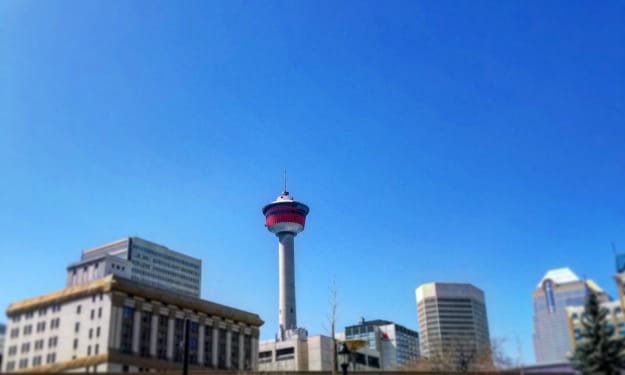Fika, Lagom, & Hygge
The Cultural Differences of Denmark & Sweden

Denmark and Sweden both have very rich and overlapping histories. As countries, when you take a look at them from the outside it would seem that they are similar. Both Scandanavian and neighbors, maybe Vikings pop into your head. The views we have can be very skewed until we have our boots on the ground.
Over the past three years I have been living and interacting with the people of these two countries they are unique, vibrant and lovely in their own way. My first year, I lived in a place called Mora in the county of Dalarna. It is located in central Sweden and roughly a three hour drive east of Oslo. Mora is special for a few reasons. Lake Siljan, Vasaloppet (famous long distance ski race), dalarna horses and hockey. Tucked into this town I learned a lot about the cultural pieces that make up Swedish society and still influence views today.
As most of us know, vikings have their roots tucked into the three countries that make up Scandinavian nations, Norway, Sweden and Denmark. With this, many traditions have been kept alive. Midsommer is one that falls within the time of first harvest. People from each community will dress up in their native dress and clothes and perform a dance around a large pole embedded in the ground. People laugh, sing and drink together through this festive time and it is not unusual to see girls and women of all ages creating head pieces from the local flowers.
The reason for bringing all of this up is the idea of lagom. It comes from the Vikings but tends to be Swedish only. I will retell it as it was told to me by my teammates and people that I met.
The Viking warriors would have a great feast, laugh, regale each other with stories and of course drink. During this time a horn was filled up to the brim with alcohol. As the night would progress each person would take a sip and pass the horn to the next individual. They would only take enough to satiate their thirst and not a drop more. By the time it made it around to the last occupant he would have enough for one drink. From this the idea of lagom is born.
What this means for modern Swedes is not being extravagant or slob like in appearance. The way you conduct yourself in public, at work and around strangers should be professional, courteous but not too personal. This idea of lagom är bästa (lagom is best) holds true still in smaller areas and with the older population. Many of the younger city dwellers find this philosophy stifling and lacking in creativity and expression. At the end of the day, it is a personal choice to follow the ideas around lagom or not. To best sum up the idea of lagom it means harmony, balance and just enough.
One tradition that is still going strong in the land of Swedes is fika. Maybe you have heard it before or tried to translate it? Google translate puts it in a very boring and uncreative manner calling it coffee break. It is far from that. It is an opportunity to sit with your coworkers, friends, family or new acquaintances and learn about them on an even playing field. Bosses will sit with new employees, coaches with players and chat to check in and learn more about that person.
The basics of fika are as follows. Find some strong Swedish coffee, offer a snack usually a pastry or an open faced sandwich and begin your conversation. The food presented should be sweet or comforting in nature but never filling. It is not meant to be a meal. Fika can happen at any time of the day and due to the nature of Swedes and their affinity for coffee this can and will happen multiple times throughout a day. It is a way to bond, to laugh and to live life. Fika helps to keep the darkness and cold winter at bay by allowing a welcoming and warm environment to be around others, to not feel isolated and alone. In the darkness of the Swedish winter you will always find a warm cup and some comfort to remind that even in the dark a little bit of light can be found.
Moving further south across the bridge from Malmö and into Denmark you will hear a few things. A change in language and dialect but a few words that might be new to the ears and peak your curiosity. Hygge and hyggeligt. It sounds beautiful, special and seeing peoples faces light up like the candles at a dimly lit coffee shop. They come alive with excitement. Hygge, is not easily definable and very much relates to the Danish people, one of the happiest countries on the planet.
If I were to attempt to summarize hygge it would be from a wonderful young woman working at one of the embassies in Copenhagen. She explained, as I will paraphrase, as something you greatly enjoy. This idea of hygge becomes very individualistic and can vary greatly. I simple terms, no two hygges are alike.
For many, it is spending time with their family, eating a good meal and enjoying the weekend after a long work week. Others might find enjoyment in watching or participating in sports such as handball, football or hockey. This young lady explained to me that she felt hyggeligt when she spent time with friends and went out, varied from a meal to coffee or even a pint. She also referenced being at home with someone you care about having some snacks, watching a movie and cuddling under a cozy blanket.
Hygge needs to have only a few aspects, in my view, that are needed to receive this wonderful feeling. First, you need people that you enjoy being around, can be family, friends, your partner, who ever makes you happy. Second, some sort of food, snack or drink. Third and final, it has to be some sort of activity all will enjoy and most likely create a positive memory.
Out of the viking history, fighting and conquering these two nations have done in the past it is amazing and insightful to find such delicate and carefully thought out ideologies on life and enjoyment. To bond, to love and live a full life.
With that I will leave you to find out more about lagom, fika and hygge. You can always go down to your local IKEA and find a recipe book specifically for fika.
A Look at Some Pastries That Can Make for a Good Fika







Comments
There are no comments for this story
Be the first to respond and start the conversation.